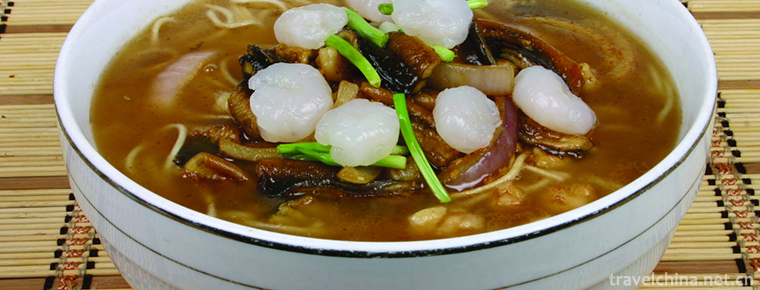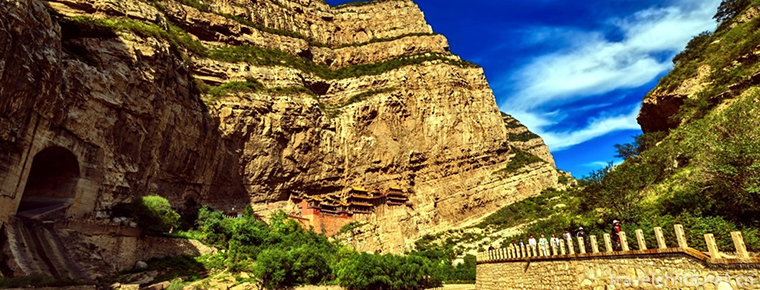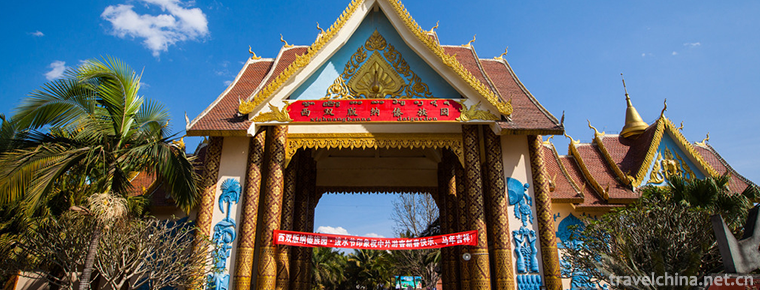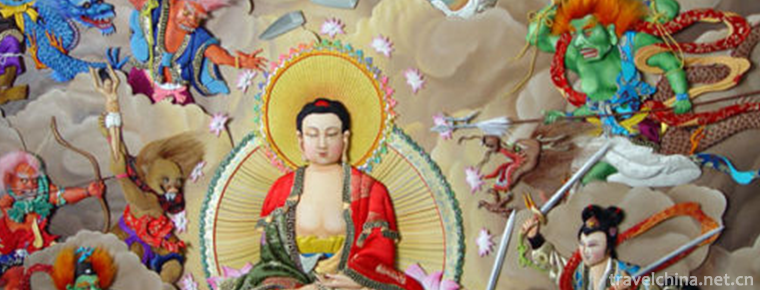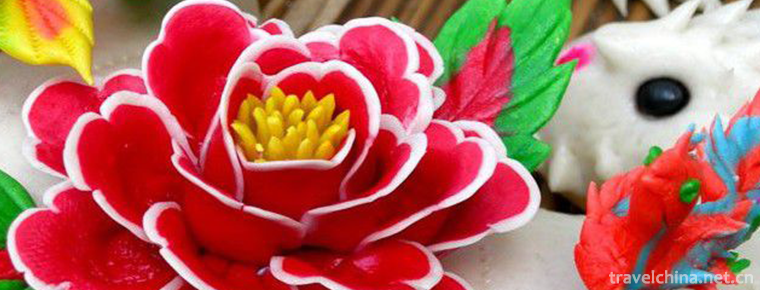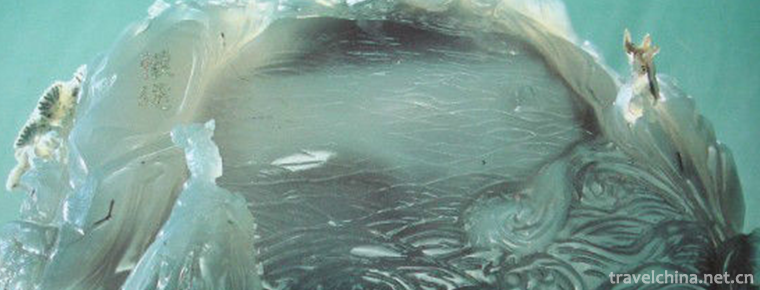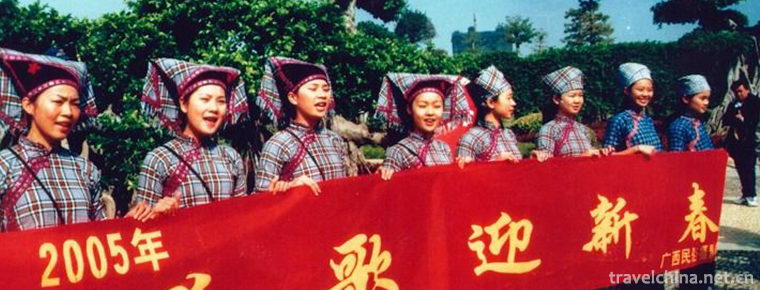Shoulds ancestral hall
Yanmenguan Scenic Spot is located in the northern part of Daizhou ancient city. South-controlled Central Plains and North-controlled Moyuan are grand military defense projects of ancient Chinese passes. In ancient times, it was called Beiling and Xishi, and the Warring States ranked as the head of Jiusai. The Northern and Southern Dynasties ranked as the Beiting Sanguan, while the Ming Dynasty ranked as the Shanxi Inner Sanguan.
It has been known as the Gongzhu Gate, Xiguan Gate and Xilongguan Gate. Xiangshan is strong and the Beishai Gate is famous. It is the treasure of the Great Wall and Pass Culture of China. Yanmenguan Scenic Spot was awarded the top ten outstanding brands of Shanxi tourism in 2009.
In February 2017, it was newly promoted as a national 5A tourist attraction.
Guancheng
Located outside the Tie-wrapped Gate on the top of Gou Ji Mountain. Tiebaomen, named for its dark brown color, is an artificial gateway. The gate is V-shaped, with a top width of 30 meters, a bottom width of 3 meters, a valley depth of 200 meters and a length of 50 meters. The situation of the Guancheng is dangerous, the barriers are strict, the width of East and West is about 20 meters, and the length of North and south is about 200 meters. There are four roof foundations in the South and one beacon fire platform in the north. Since the iron-wrapped door was closed, the name of tagging plug was replaced by the name of Yanmen Gate. Emperor Liang Jianwendi's "Yanmen Taishou Xing" contains: "Longdusk wind is constant, Guan frost is self-dense. The Maple horse hissed at night, but the border clothes were not heavy in autumn.
Yan Men Village
Located on the ridge platform on both sides of Tiebaomen East and West, it was established in the Northern Song Dynasty as a military garrison base. Xilongzhai and Huyuzhai are also called "Yanmen Sanzhai". Situated in a very dangerous situation, Guanshan refused to desert the original Yuguan, the poem contains: "Dangerous peak Qianzhang boundary north and south, rock heap Yunyan can pass. On this day, Zhenyi Linshuo desert, when will it return to accompany Yanghe? Xiyi's upper boundaries invade the Han Dynasty, and the water falls into the human world to make rivers. When to build diligently and painstakingly, Han Qianfei will not have much.
Ancient gateway Road
It is also called Saigu Road, which is more than 30 kilometers long. From Taihe Lingkou in the south, through Fulagou, Chengshang, Shiqianggou, Wujiayao and Heishiguangou, the gate is wrapped in iron at a higher level, and then from Zhaozhuang to Baicaokou, and then out of Liulin and oil house. Now the ancient Panguan Road is well preserved, paved with stone, with nine folds in one hundred steps, and the cliffs on the left and right are cut like cliffs. Poetry: "Looking at Yanmen Gate from afar, / Mountains are too high to climb. Birds are flying high and green, and people are among the clouds. Tigers and leopards are strong in thousands, and minks are idle in thousands of stoves. The Central Plains is so dangerous that it can protect its own shame.
Pass
That is, the northern Pass of the ancient Yanmen Pass, commonly known as the Baicaokou Pass, is one of the eighteen Passes of the Yanmen Pass. Two castles in one pass, Taihe Castle in the South and Changsheng Castle in the north, separated by mountains. During the Spring and Autumn Period and the Warring States Period, Baicaokou was the main crossing between the north and the south, along the ancient Pass of Yanmen, with continuous business trips in the past. The Pass is built across the river, with three Pass Walls, six Pass Gates and six Fortresses. East and West are connected with the Great Wall. Existing gate 1, forehead plaque carved "to accommodate people and livestock", fortress 1, forehead plaque carved "monkey ridge". Legend has it that in the Northern Song Dynasty, Pan Mei was the commander of the court, and Yang Jiye was the pioneer in guarding the north. The three armies came to Yanmen Guan to camp. Pan Mei let Yang Jiye stationed outside the Pass, which is now Baicaokou. At that time, the Pass had no name. Pan Mei wanted sheep to be afraid of losing grass, so she called it "Losing Grass Pass" here, trying to trap Yang Ye out of the Pass. Later, when Yang Ye was framed by Pan Mei, the people commemorated the loyalty of the Yang family to the country and the hatred of Pan Mei's treachery, and changed the spoiled grass mouth to the white grass mouth, because sheep were afraid of eating spoiled grass and liked eating white grass.
Changsheng Fort
Located in the west highland of Baicaokou Pass, it is the old site of ancient Xilongzhen. Yanmenguan Ancient Road in the south, echoes the Taihe Fort in the distance, and looks out to the desert plain in the north, against the old Guangwu Ancient City. More than 500 meters in circumference, stone-based brick wall, built in the northeast corner of the temple, the front plaque of the fort door carved "Changshengbao" three words. In the last paragraph, Wu Renqing wrote the book "Wanli Jiayin Du Royal History". In the next paragraph, Yan Shi, the Minister of political affairs, was elected.
Monkey ridge the Great Wall
Monkey Ridge is named for its monkey-like rocks on the cliffs. The Great Wall winding on it, such as the Dragon wave Pentium, momentum is very magnificent, for the Ming Dynasty 33 years (1605) governor Du Yushi Li Jingyuan built on the ancient Great Wall site, the top of three layers of brick pavement, you can walk horse. Baicaokou in the west, to Xinguangwu in the east, is 8 to 10 meters high, 4.6 meters wide and 5033 meters long, with a garrison city built every 120 meters. The enemy buildings are mostly built on the outside of the Great Wall, with a width of 10 meters and a depth of 8 meters, with a total height of about 15 meters. There are hidden doors under them, which are built in areas where soldiers can be stationed inside and charged outside. The doors are 2.3 meters high and 17 meters wide. The existing complete enemy buildings include "needle holes", "excavation", "Zhuangbo", "Tianshan" and so on. In addition, there are beacon towers and trenches, which are the representative works of the Great Wall of Ming Dynasty in China.
Xi Xing Zhai
Located on the top of the northern city of Taihe Lingkou, Taihe Lingkou was once called Shenxian Pass, so it is also called Shenxian Hengcheng. It is one of the three famous villages in Daizhou. It was established in the Northern Song Dynasty and guarded the military garrison for the Pass.
Annotation of ancestral temple
Located at the foot of the Gongzhu Mountain, it connects with the Gongzhu plug in the north. It is also known as the Gongzhu Temple of Beidou Mountain, also known as the Beidou Temple, because the seven beams are surrounded by Dou. The temple building hall, there are front hall, back hall, as well as the main hall, monument hall, Jinglou, bell tower, Jin Xianning first year to set up a marking monument. In the Song Dynasty, there were many spiritual responses to praying for rain, and there were five inscriptions of Chongji. Jin, Yuan and Tifengyou Shun Gong, Guangyou Ling Ying Wang. In the early years of Hongwu Ming Dynasty, it was renamed the Mountain Temple. It was rebuilt at the beginning of Zhengde year. There were seven spiritual springs under the throne.
Yan men canal
Located on the east side of Gudao and the north side of Guguangwu City. "The Book of the Universe" quotes "The Book of Tu" as saying: "Wei Zhaozhao is a county guardian, digging the source for the canal, waterflooding the city, the people depend on their interests." At that time, the well water in the city was salty and bitter. Residents drew water seven miles back and forth and drew canals to divert the northern mountains and waters into the city. It was one of the famous water conservancy projects in ancient prefectures and the existing sites.
Yanmenguan Ambush Site
Located in the Black Stone Valley of the Gudao, it is 1000 meters long in North and South and 200 meters wide in East and west. In October 1937, 120 divisions of the Eighth Route Army ambushed here, under the personal command of Head He Bingyan and political Commissioner Liao Hansheng. On October 16, according to information, more than 300 vehicles were assembled in Datong, Japan, full of weapons and ammunition, ready to go through Yanmen Pass to the front line of Xinkou. Through situation analysis and field investigation, Bridge No. 4 and Bridge No. 5 were destroyed on the evening of 17. On the 18th, the troops were ambushed all over the place. After four hours of fierce fighting from 10 a.m. to 2 p.m., nearly 500 Japanese vehicles invaded China, nearly 200 Japanese soldiers were killed and dozens of enemy vehicles were destroyed. This campaign is well-known throughout the country.
Yangmingbao Airport Site
Located in the southwest of Yangmingbao Village, built by Yan Xishan, it was occupied by Japanese forces on July 1, 1937 and expanded into a rear military base for Japanese invasion of China. In October 1937, under the careful command of Chen Xilian, the 769 regiment of 385 brigade, 129 division of the Eighth Route Army succeeded in attacking at night, destroying more than 20 enemy planes and eliminating more than 100 Japanese troops, effectively cooperating with the Xinkou Campaign.
Tomb of Sun Chuanting
Located in the east of Xiahuazhuang Village, Yangmingbao Town. It covers an area of 7000 square meters, and the height of the tomb is 4 meters and the circumference is about 22 meters. Surrounded by red walls, planting pine trees and green cypresses, there are sound hall, tombstone, brick * Yong Road, stone columns, stone horses, stone pigs and stone sheep. The tomb destroyed the Cultural Revolution. Feng Yunxiang, a member of the Ministry of Criminal Justice of the Qing Dynasty, wrote the epitaph of Shangshu Baigu Sun Gong and Zhang Shuren, who was accompanied by Feng Shuren, the seven provinces of the Military Department of the Daming Supervisor Division. It was engraved on six stone tablets, with a total of more than 6,000 words, detailing his life story.
The Ming Yanmen Pass is located in Donglongguan. Donglongguan is named for its location in the east of Guzhu Mountain, that is, the east of Longling. "Tangshu Geographic Records" contains: "Yanmen Guan Donglongguan, Xilongguan." Du You Zengyun, Prime Minister of Tang Dynasty, said, "The Eastern Longguan Pass is very dangerous, and the Western Longguan Pass is a dangerous one. Eastern Longguan and Western Longguan were reconstructed equally. In the Ming Dynasty, the new Yanmen Pass was built at Donglongguan Pass, and the 18 Passes in the Northern Song Dynasty were rebuilt on the East and West flanks. Each pass has a strong castle, which is connected by the Great Wall, forming a new military defense system centered on Yanmen Pass, extending 300 miles from the level Pass to Xuangang Pass.
Guancheng
Located at the site of Donglongguan, Ji'an Hou Luheng was demoted to Daizhou in the seventh year of Hongwu Ming Dynasty (1374). Ming Jingtai, Zhengde and Jiajing have been renovated and Wanli has been renovated for more than 600 years. The circumference of Guancheng is 1000 meters, the wall is 10 meters high, the brick body of the stone pedestal is rammed earth inside, and the door opens three times, namely, the East Gate, the West Gate and the Small North Gate.
Urn City
Located outside the Dili Gate on the north side of Guancheng, the city is half as high as Guancheng, with a hidden gate. Weng Chengmen is commonly known as Xiaobeimen, the top of the stone coupon door, and the forehead plaque is inscribed with three big characters "Yanmen Gate". There is a couplet of inlaid bricks on both sides: "Three sides rush to the top, Jiusai respects the first pass." Every word, every brick, is handed down by Mr. Fu Shan. Upstairs on the gate, brick and wood structure, known as Wengcheng Gate Tower.
A Town Besieged
The corridor is a stone wall with a circumference of about 10,000 meters. The southern end of the corridor connects the eastern and Western flanks of Guancheng and extends to the bottom of the valley. Besieged city gate south to north, built on the Ningbian Tower, commonly known as the Mingyue Tower, was built during the Jiajing period of the Ming Dynasty. According to the General Geographical Examination of Yanmen Gate, there are three big stone walls and 25 small stone walls outside the Gate to guard the first line of defense against the enemy.
Dongcheng
Located at the elevation on the east side of Guguan Road in the corridor of Guancheng City, it was built in Hongwu Period of Ming Dynasty and renovated in Zhengde Period. Dongcheng is a big brick city. The Geographic Examination of Yanmenguan contains: "Two miles and 350 steps around, according to the mountains, there are no trenches and six hundred mounds. East and West City Gate 2, Yanmen, Yansai. South and Guancheng Tian Danger Gate extension wall are integrated, West and Guancheng Dili Gate extension wall are integrated, Beishun ridge to valley bottom and Ningbian Building of Weicheng Guanmen are integrated, and barracks and stables are built to guard Guancheng troops.
Westlife
The west side of Guguan Road in the corridor of the city of Address Guancheng is the same as the East city, which is Shicheng. "Yanmenguan Geographic General Examination" contains: "Shicheng is 1 Zhang 5, surrounded by two miles more than 349 steps, five hundred stacks, one gate. In the city, there are thousands of households, one warehouse and one grassland. The ridge of Nanshun Mountain extends to the commanding heights of Xicheng, and is connected with the fortress. It turns north to the west corner building and the wall of Tianxianmen. It connects the east corner building to the Dili gate and the city wall. A camp is set up in the city for the guards to practice and guard the imperial guard. There is a wall between the west city and the East city. There is a corner tower in the South and north corner of the wall, and a gate and a gate tower in the middle. Weiyuan Tower, commonly known as "Yanyue Tower", was built on the top of the city during the Ming and Jiajing Dynasties. There is a school yard on the east side of Xichengmen and a general platform on the school yard.
Tian Men gate and Yan Lou
Tianxianmen is the east gate of Guancheng City, with brick tickets on stone pedestals and inscriptions of "Tianxianmen" in inscriptions. Walls are stacked, doors and holes are planned on one side, and paved with bluestone slabs. On the Tian Dang Men, there are Yan Tower, sitting in the west facing east, facing 5 rooms wide, entering 4 rooms deep, and corridors around it. The building is built on the top of the hill with heavy eaves and rest. The front openings are separated by doors, and the two roofs are brick walls. The back of the building is made of bricks except for two circular windows. Platform louvers with bucket arches, high and warped, the roof intersected with grey tiles, ridges at both ends of a big kiss, hanging wind bells at four corners. The building is empty and free for soldiers to inspect and visit.
Dili Men and Liulang Temple
Dili Gate is the west gate of Guancheng City, stone block body, forehead inscriptions and inscriptions of the word "Dili". The gate is sitting north and south, and the building is the Hall of Yang Liulang. On both sides, the statues of Meng Liang and Jiao Zan are sculpted to provide one iron knife for Yang Menlang and two cannons for the city building. According to legend, the iron knife in the ancestral hall was left by Yang Liulang during Renzong's reign in the Northern Song Dynasty. At that time, Yang Liulang was stationed at Yanmen Pass for Marshal. It was in the mid-winter season when the mountains were closed by heavy snow. Three thousand soldiers and horses in the city were short of food and grass. The Liao Army was besieged by heavy troops, and Yang Liulang sent people to break through the encirclement and move troops quickly. On the other hand, he encouraged the generals to stick to the city. The casualties of the two armies were very heavy. After several days of confrontation, the Liao Army was still besieging unremittingly, and there was no news of the Song Army's reinforcements. The grain and grass in the city would soon be used up. Faced with the swarming enemies, Yang Liulang really did not know how to deal with them. He was attracted by the current situation when he was in distress, but saw two water-carrying men let the ice slip under his feet and could not struggle for half a day. Yang Liulang immediately decided to make a living. He ordered his men to take water to the city and pour buckets on the wall. The cold weather made the water fall into ice and froze the wall like armour. When the Liao army attacked the city again, because the walls were smooth and difficult to climb, Yang Liulang fell all over the city from the ladder. He took advantage of the situation to open the city gate and charged the battle with his shining iron knife to defeat the enemy besieged the city. The iron knife became the witness and symbol of Yang Liulang's soldier's imminent predicament, winning with wisdom and winning with fewer.
Li Mu Temple
Located on the east side of Tianxianmen in Guancheng, also known as Wu'an Jun Temple, Jingbian Temple and Zhenbian Temple, it was built in memory of General Li Mu of Zhao Guoliang during the Warring States Period. The ancestral temple is a large-scale building with a stone platform in front of the mountain gate, a pair of flagpoles made of stone and a pair of stone lions. In the middle and left, each step is constructed with stone carved columns and slabs. The second floor of bells and drums is built on both sides of the gate. The temple is divided into two parts. The front courtyard is flanked by compartments. The front side of the temple is dedicated to the statue of Li Mu, while the back side is dedicated to the statue of Wei Tuo. On both sides of the hall there are aisles and storerooms for East and west. The main hall of the backyard is the Daxiong Hall for one Buddha and two Bodhisattvas. The main hall is the abbot on the left, the ancestral hall on the right, and the East-West room is the teacher's room. On the east side of the main hall, along the steps, there are porous kiln houses, named Nine Kilns and Eighteen Caves. Stone-based brick coupons used to be military fortresses. Zhuyi Taoist Fu Shan wrote an antithetical couplet in the temple: "The repertoire sings Faxiangyun all over the Bodhi trees, and the lotus platform passes through Ruikou to visit the blissful heaven." The existing stele 13 links.
Guan Ling
Located on the side of Zhongpan Road of Nanguguan Road, Yanmenguan Cemetery is the cemetery of the deceased generals in the past dynasties. Tombs stand on hills and gravestones, all leaning on the cliff road, and the atmosphere is solemn. Spring wildflowers are full of sacrifices to loyal bones, summer solstices are full of grass to shelter the soul, autumn to the north wind calls for sadness, winter snow covered with Cape vegetable. Now the green grass covers the grave, willow weeping green silk dyes eternal loyalty, the poem contains: "Poplar yellow grass hangs on the ancient hill by running water / broken goose and jackdaw // ambition unrequited busy / the west wind bleak sounds Wu hook."
Changping Bridge
Located at the juncture of Yingfanggou at the bottom of Guannan Valley, it stands on the edge of the mountain. In peacetime, it is a trade port, and in wartime, it is a guard post. "There are Puji and Taiping Bridges built at the beginning, where there are seven small bridges, where people are salty and convenient, and finally the bridge is built." The stone arch pedestal is located in Shenjian with a total height of 10 meters, a width of more than 6 meters, a span of 50 meters, and a stele of Changping Bridge standing beside the bridge.
Ma Gong cemetery
Located in the north of Changping Bridge, Ma Gong is a twin brother who served as the general soldier of Yanmen Pass. Legend has it that Yanmen Pass Road is a disaster of tigers, which often injures people and past business travelers day and night, and makes the bustling Yanmen Pass Road almost extinct. The Ma brothers then volunteered to kill themselves. The younger brother was killed in a fight with the tiger. The younger brother Chengzhi was indignant to kill the tiger by the roadside, thus restoring the peace and liveliness of Yanmen Pass. In commemoration of Ma Gong's achievements in eliminating harms, the local people donated money to set up a monument called "Ma Gong kills tigers".
"Yanmen Guanzhi" contains: "Gouzhu Mountain, known as Longling in ancient times, Lingxi as the West Longguan, Lingdong as the East Longguan, the stone side walls of the two passes are linked as one, and the Pearl couplets of successive dynasties are interdependent and defensive. The former site of Yanmen Pass in Ming Dynasty is Xilongguan, while the latter site in Ming Dynasty is Donglongguan and Xilongguan. Ancient Yanmen Pass is Baicaokou in the north, Taihe Lingkou in the south, Guangwukou in the north and Nankou in the south. The East and West wings of Yanmen Pass extend to Fanshi and Yuanping respectively, with 18 passes. The overall layout of Yanmen Pass can be summarized as "two passes, four passes and eighteen parks".
Yanmenguan scenic spot is mainly divided into two parts. They are the ancient Yanmenguan scenic spot and the Ming Yanmenguan scenic spot.
Ancient Yanmen Gate, or Tiebaomen Gate, formerly known as Beiling, Xikuan, Gouge plug, situated at the old site of Xilongguan. Xilongguan is named for its location in the west of Gouzhu Mountain, that is, the west of Longling Mountains. "Tang Zhi" contains: "Xilongguan, Guanming also, in Yanmen Mountain, East and West cliffs, there are roads, circling rugged, absolute top clearance, so-called Xilongguan, also known as Yanmen Pass." It has always been an important and parochial political institute of the Garrison Army in the north of China. Major historical events such as the Northern Expedition of Emperor Gaozu of the Han Dynasty, Zhaojun's Exit from the Fortress, the Northern Captivity of Emperors of Song, Qin and Hui Dynasties, and the Three Passes of the Yangjia Town are all related to this.










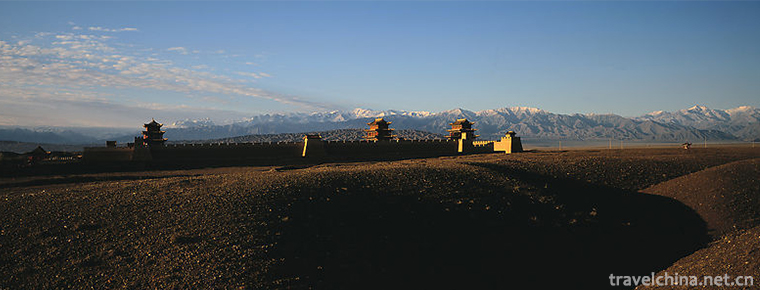
-
Noodles with quickfried eel shreds and shelled shrimps
Shrimp fried eel noodles is a famous traditional food in Kui yuan hall, Hangzhou City, Zhejiang province. When the shrimp is cooked with fried eel noodles, select the strong fresh eel,.
Views: 158 Time 2018-10-27 -
Mount Heng
Mt. Hengshan, also known as "Tai Mt. Hengshan", is known as "Xuanwu mountain" and "Yushan". Among them, inverted Ma Pass, Bauhinia Pass, Pingxiaoguan Pass, Yanmen Pass.
Views: 197 Time 2018-10-30 -
Baiyang Lake
Baiyang Lake/Anxin Baiyangdian Scenic Area is located in the central part of Hebei Province. Anxin Baiyangdian is the largest inland lake in Hebei Province.
Views: 322 Time 2018-11-24 -
Mount Jiuhua Scenic Area
Jiuhua Mountain Scenic Spot is located in Anhui Province, China. The northwest is across the Yangtze River and Tianzhu Mountain, and the Southeast .
Views: 110 Time 2018-12-08 -
Lijiang Heilongtan Scenic Area
Heilongtan (also known as Yuquan Park) was built in the second year of Qianlong (1737). It was restored in the sixty years of Qianlong and the eighteenth year of Guangxu. The old Yuquan Dragon King .
Views: 257 Time 2018-12-22 -
The Dai Garden of Xishuangbanna
The Dai Garden is called Xishuangbanna Dai Garden. Located in Xishuangbanna Olive Dam, Yunnan Province, China. There are five Dai Natural Villages with the best preservation in China.
Views: 175 Time 2019-02-25 -
Yushui Ancient Hot Spring
Maoming Yushui Ancient Hot Spring, under the Yuyi Shishan Mountain, beside the ancient post road, hot springs are all over the place. The water is boiling all the time. Officials in counties and citie.
Views: 139 Time 2019-03-09 -
Pile brocade
Duijin, also known as Shangdang Duijin, is a handicraft hand Duijin is developed on the basis of traditional Chinese painting and embroidery. It is made of silk as the main fabric.
Views: 137 Time 2019-04-28 -
Dough Flowers
Flower, commonly known as "flower bun", belongs to the art of facial sculpture. There are weddings, funerals, birthday gifts, Festival buns. Flowers are made of ordinary flour and special fl.
Views: 97 Time 2019-06-05 -
Jade carving
Jade carving is one of the oldest carving varieties in China. Jade carved into exquisite crafts, known as jade carving. Craftsmen in the production process, according to the natural color and shape of.
Views: 343 Time 2019-07-16 -
Liao Song of the Zhuang Nationality
Liao Ge of Zhuang Nationality, folk literature of Pingguo County, Guangxi Zhuang Autonomous Region, is one of the national intangible cultural heritage..
Views: 141 Time 2019-08-16 -
Tie Muer Buhua
Tie Muer Buhua (1286 - 1368). Yuan will be the first to stay. Rate troops to go Xiangyang He won the battle with song, fan and Wen Hu in the Shigi shoal beach. Later from Bo Yan Song, in Yang Luo Bao .
Views: 144 Time 2019-09-14
